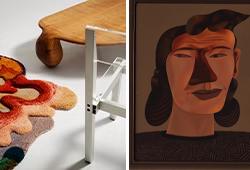Anders Bruno Liljefors
Anders Bruno Liljefors, a sand cast stoneware sculpture, Sweden 1955-57.
Parttly glazed, decorated in blue and whitek, signed ABL with the studio mark, G-BERG, height 14 cm, diameter ca 10.5 cm.
General impression is good.
Artist
Ceramicist and painter Anders Bruno Liljefors studied at the Royal Academy of Fine Arts from 1945 to 1947. He worked at Gustavsberg's Studio during the periods 1947-53 and 1955-57, as well as at his own studios in Roslagen and in Blekinge. Liljefors started at the Gustavsberg factory as a handyman, but his talent was quickly noticed by Wilhelm Kåge, who, after just a few weeks, provided Liljefors with his own studio in the Studio where he primarily worked with stoneware. Soon, Liljefors had his own turner, Dan Malmborg, and together they developed the rustic grey-green stoneware that became his breakthrough. His first solo exhibition was at Nordiska Kompaniet in Stockholm in 1952. It was a success, with most pieces sold. In 1955, he conducted the first experimental trials with sand casting, which attracted significant media attention when presented in the factory's shop on Birger Jarlsgatan in Stockholm. Writers were surprised, puzzled, delighted, and sceptical; terms like "Ceramic Neo-Brutalism" were coined, some saw new possibilities within architecture, while others were less impressed by the collection. These primitive and bold forms were nonetheless groundbreaking, and the Swedish stoneware tradition was thereby energised to develop in new directions. In 1961, Liljefors received the first Kåge Scholarship for his "strongly personal and refreshingly innovative style". During the 1960s, he carried out around 15 public decorations, ranging from minor decorations to entire walls.
Read more




































